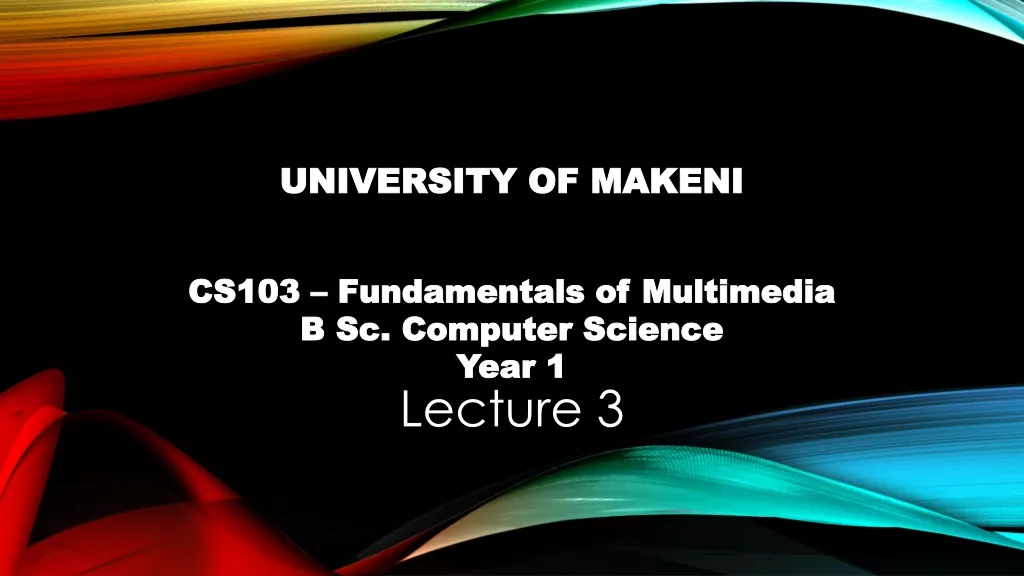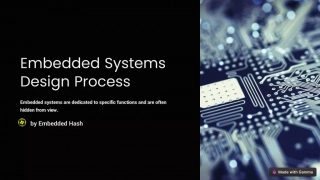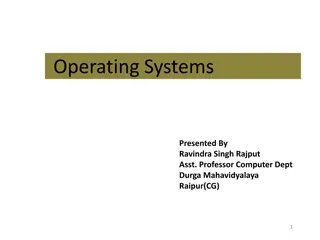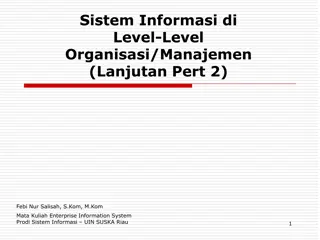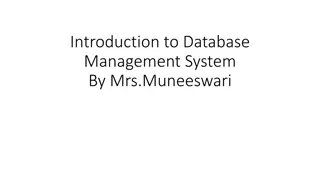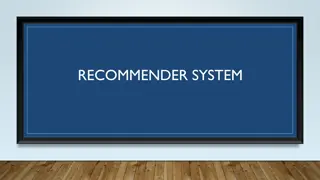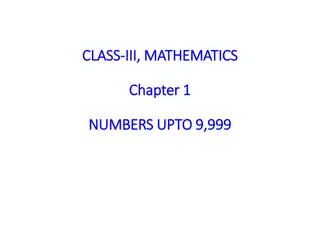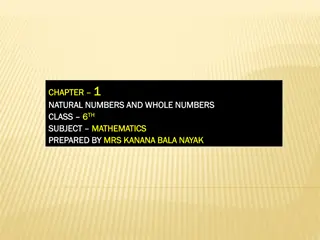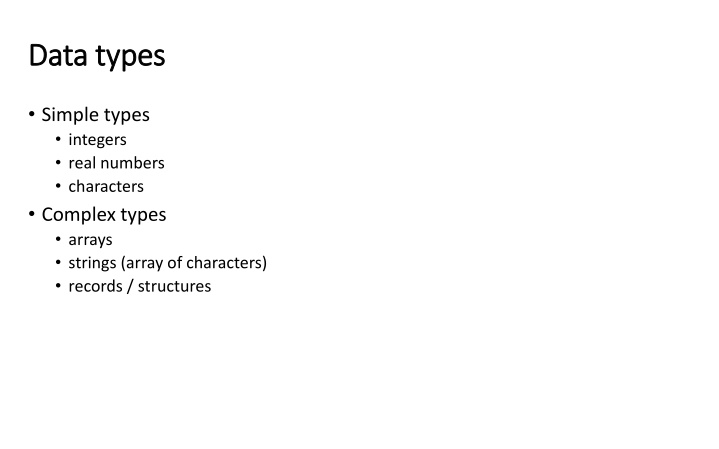
Understanding Data Types, Ranges, and Character Encoding in C Programming
Explore the concepts of data types, ranges of integers, overflow scenarios, character encoding in C, and storing numbers in a computer. Learn about unsigned and signed integers, ASCII characters, and converting text to binary format using numeral systems in C programming.
Download Presentation

Please find below an Image/Link to download the presentation.
The content on the website is provided AS IS for your information and personal use only. It may not be sold, licensed, or shared on other websites without obtaining consent from the author. If you encounter any issues during the download, it is possible that the publisher has removed the file from their server.
You are allowed to download the files provided on this website for personal or commercial use, subject to the condition that they are used lawfully. All files are the property of their respective owners.
The content on the website is provided AS IS for your information and personal use only. It may not be sold, licensed, or shared on other websites without obtaining consent from the author.
E N D
Presentation Transcript
Data types Data types Simple types integers real numbers characters Complex types arrays strings (array of characters) records / structures
Range of unsigned integers Range of unsigned integers When defining variables one must keep in mind what is the maximum permitted value for that variable type 1 byte / 8 bits. C type: unsigned char. Range 0 .. 255 2 bytes / 16 bits. C type: unsigned short int (unsigned short). Range 0 .. 65535 4 bytes / 32 bits. C type: unsigned long int (unsigned long, unsigned int). Range 0 .. 4294967295 ~ 0 .. 4,29*109 8 bytes / 64 bits. C type: unsigned long long int (unsigned long long). Range 0 .. 18446744073709551615 ~ 0 .. 18,4*1018
Overflow Overflow What happens when the value goes outside the permitted range? Example: adding 8-bit unsigned integers 1 and 255. You get an overflow and the highest bit is lost. The result is the remainder of division (result / 256) 1 1 1 1 1 1 1 1 1 1 1 1 1 1 1 1 1 0 0 1 57 = = + + 1 1 1 1 1 1 1 1 1 1 1 1 0 0 0 0 255 240 = = 1 0 0 0 0 0 0 0 0 0 1 0 0 1 0 1 0 0 1 41 = = = = = = = = = = = = = = = = = = = = 256 128 64 32 16 8 4 2 1 256 128 64 32 16 8 4 2 1
Range of signed integers Range of signed integers Again the datatype determines the minimum and maximum permitted value. 1 byte / 8 bits. C type: char. Range -128 .. 127 2 bytes / 16 bits. C type: short int (short). Range -32768 .. 32767 4 bytes / 32 bits. C type: long int (long, int). Range -2147483648 .. 2147483647 ~ -2.1*109.. 2,1*109 8 bytes / 64 bits. C type: long long int (long long). Range -9223372036854775808 .. 9223372036854775807 ~ -9,2*1018.. 9,2*1018
Characters Characters ASCII standard uses 7 bits to encode upper and lowercase Latin letters, digits and punctuation. Character "1" is encoded with a value 49, "A" is 65, "a" is 97 C datatype is char, same as signed 8-bit integer A single character in C is surrounded by single quotation marks: 'A' Special symbols in C are escaped using backslash \n is a newline character \" is a quotation mark \t is tab \\ is backslash itself
Storing numbers in a computer Storing numbers in a computer We have already used integers and real numbers. When a number is on the screen or gets read from keyboard then it will be in text format an array of characters. For various math tasks this array needs to be converted to binary format. We have also used functions such as scanf and printf that can do it. There are other functions such as atoi, atof, strtol, strtof. But how do they work? How do they convert from one format to another? That brings us to the numeral systems.
Numeral systems Numeral systems In everyday use we have the decimal system a positional numeral system with base 10. In a positional system, the positions correspond to powers of the base and the numer in that position is the coefficient, so the value of the number is going to be ? = ????where a is coefficient, b is base and i is position. For example 147.23 is 1 102+ 4 101+ 7 100+ 2 10-1+ 3 10-2 In decimal system the allowed coefficients are 0, 1, 2, 3, 4, 5, 6, 7, 8 and 9. There are also non-positional numeral systems. For example Roman numerals. I is 1. II is however 2, not 11. Japanese system is also non- positional: is 33,333 but is 30,003.
Binary Binary system system Transistor is a device with two states, it can permit the current to pass or not. These states can be encoded with 1 and 0. Since the transistor is the basis of all computing technology, binary system is used in computers. The decimal number 147.23 is much longer in binary: 1001 0011.0011 1010 is 1 27+ 1 24+ 1 21+ 1 20+ 1 2-3+ 1 2-4+ 1 2-5+ 1 2-7 When we add these we get: 128 + 16 + 2 + 1 + 0.125 + 0.0625 + 0.03125 + 0.0078125 = 147.2265625, which isn't equal to 147.23-ga. Therefore comparing real numbers in a computer is dangerous, especially if one of them is a result of series of operations. In this case we can again use the text.
Number length in various systems Number length in various systems In a binary system 147 was already 8 digits. It may seem that 2 is very inefficcient base. However the value of the positions grows exponentially and even with base 2, exponential function grows very fast. The number of digits grows logarithmically. To represent 1000 we need log21000 10 bits. To represent 1,000,000 we need log21,000,000 20 bits. Generally one decimal place is 3.3 binary places and 10 binary places are 3 decimal places. 64 bits is therefore 6*3 + 4/3.3 slightly over 19 decimal places.
Numeral systems with base larger than 10 Numeral systems with base larger than 10 We use following digits 0, 1, 2, 3, 4, 5, 6, 7, 8 ja 9 As long as the base of another numeral system is smaller than 10 we can use a subset of digits. When the base is larger than 10 then digits won't cover all coefficients any more. Then letters will be used and they can be encoded as follows: A 10 B 11 etc.. For hexadecimal systems (base 16) the coefficients are 0..9 and A..F Hexadecimal system is quite common in computers because one byte corresponds to two symbols. Converting is very easy, 1 symbol becomes exactly 4 bits and vice versa
Reading integer of X Reading integer of X- -system system When readign an integer we can start from the beginning or the end. From the beginning 1. Let's pick 0 for total_value 2. Multiply total_value with base 3. Add current coefficient to total_value 4. Move towards the end 5. If there are more coefficients then go to 2 else total_value has the value From the end 1. Let's pick 0 for the totoal_value and 1 for position_value 2. Multiply the coefficient with position_value and add to total_value 3. Move towards the beginning and multiply the position_value with base 4. If there are more coefficients then go to 2 else total_value has the value
Reading fraction of X Reading fraction of X- -system system This is always easier to do from the beginning 1. Pick 0 for total_value, 1 / base for position_value 2. Let's multiply current coefficient with position_value and add to total_value 3. Move towards the end and divide position_value by base. 4. If there are more coefficients then go to 2, else total_value is the answer.
Writing integer in x Writing integer in x- -system system It is more efficient to do it from the end but then we get the coefficients in reversed order. 1. Move to beginning of array 2. Divide source_number by base and find the remainder 3. Store the remainder in array, move to next position in array 4. Divide source_number by base 5. if source_number > 0, then go to 2 6. Move to previous position and print the coefficient 7. If we're not at the beginning of array then go to 6 else answer has been printed
Writing integer in Writing integer in x x- -system system Also possible to do from the beginning 1. Set position_value to 1 2. If source_number / position_value is greater than base then go to 3 else go to 4 3. Multiply position_value by base and go to 2 4. Find the coefficient by dividing source_number with position_value, print it 5. Subtract coefficient * position_value from source_number 6. Divide position_value by base. 7. If position_value > 0 then go to 4 else answer has been printed
Writing fraction in x Writing fraction in x- -system system This is better to do from the beginning 1. Print decimal symbol 2. Multiply source_number by base. 3. Print integer portion 4. Subtract integer portion from the number 5. If the source_number isn't 0 and we have room* then go to 2 else we're done Room signifies, how many "decimal places" we want For example printing 0.5 in a numeral system with base 3 the source_number will always remain non-zero.

